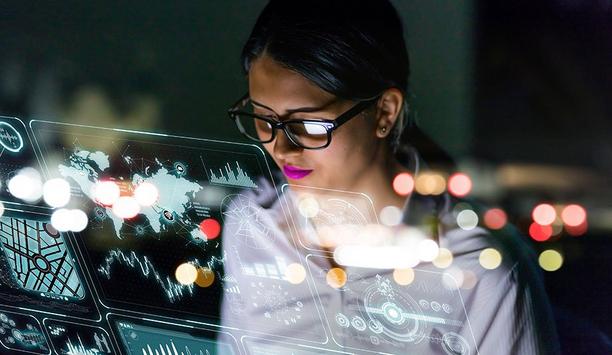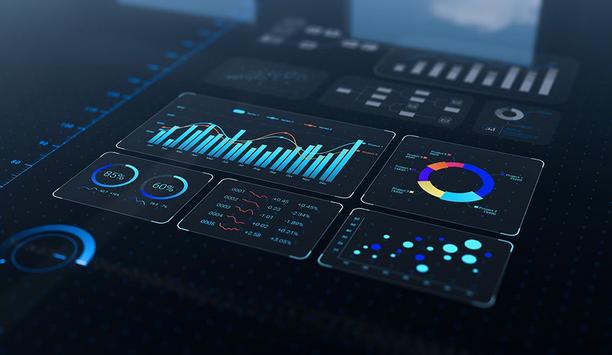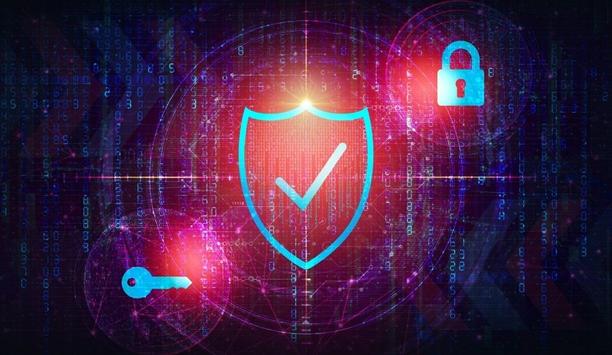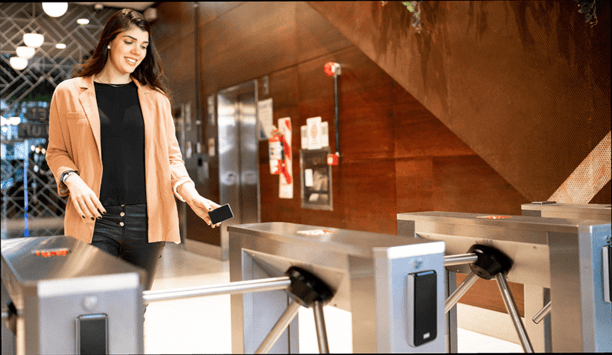CorsightAI Inc. - Experts & Thought Leaders
Latest CorsightAI Inc. news & announcements
The UK’s Security & Policing 2025 expo opened in Hampshire, bringing together government officials, law enforcement agencies and policing-tech vendors to discuss the latest developments in public safety and security. This year the event will focus on counter-terrorism, border security, cyber threats and the use of AI in policing. Tech companies to watch Thales will showcase its AI-driven border security solutions, which are designed to support identity verification processes at international checkpoints. The company has been involved in developing systems used in automated border control and passenger screening. NEC Corporation will present its facial recognition systems, which have been deployed in various public security settings. AI-based video technology Digital Barriers is a provider of AI-based video technology aimed at enhancing real-time decision-making The Japanese company’s technology has been used in airports, transport hubs and by law enforcement agencies for identification and verification purposes. Digital Barriers is a provider of AI-based video technology aimed at enhancing real-time decision-making for law enforcement, public safety and other critical sectors. The company’s secure edge platform and patented video compression tech are used across various industries including city law enforcement, defense, transportation and events, to provide instant insights from real-time video feeds. Facial recognition in UK policing The use of facial recognition technology by UK police continues to expand. A recent transparency report from Essex Police detailed the results of 38 deployments of live facial recognition. Over 383,000 match attempts were made using software from Corsight AI and Digital Barriers, with only one false alert recorded. During these operations, the system generated 61 alerts leading to 11 arrests, including suspects wanted for assault and sexual offenses. AI-driven surveillance tools Police statistics show that these tools help speed up studies and improve public safety The accuracy rate of the technology, according to the report, was 99.9997%. With rising crime rates and growing security concerns, facial recognition and AI-driven surveillance tools are becoming more widely adopted. Police statistics show that these tools help speed up investigations and improve public safety. Corsight AI will also present its advanced facial intelligence platform at Security & Policing 2025, showcasing its capabilities in real-time watchlist alerting and forensic investigations. Future of AI in crime prevention Corsight AI President Rob Watts commented on the growing demand for AI-driven policing solutions: "In many regions, we are witnessing an increase in violent crime and various threats to personal safety. This directly fuels the demand for effective and efficient law enforcement, often including the implementation of facial intelligence tech for real-time watchlist alerting and after-the-fact forensic investigations." "If you're a Western police force needing to reliably identify people in real-world conditions like outdoor darkness and in motion, you have very few options." Security & Policing 2025 will provide a platform to explore these issues further, as law enforcement agencies and tech providers look at the future of AI in crime prevention and public security.
Last week in New Delhi, the Future Crime Summit 2025, India's largest gathering on cyber innovations and synthetic threats, brought together over 1,000 experts, law enforcement officials, and defence pioneers to discuss the growing challenges posed by cybercrime and the latest AI-driven solutions. Key topics included AI-enabled attacks, ransomware, crypto fraud, blockchain vulnerabilities, and the risks of quantum computing. The founder of the Future Crime event, Professor Dr. Triveni Singh, also attended the summit. Evolving cyber threats Iqbal Hassan, Deputy Director General at the Ministry of Electronics and IT and Founder of the Future Crime Research Foundation (FCRF), provided insightful inputs on how the government is taking concrete steps to counter cyberattacks. He highlighted ongoing policy measures designed to strengthen law enforcement agencies (LEAs) in their fight against evolving cyber threats. Adoption of AI and machine learning Hassan emphasised the government’s duty to bolstering cybersecurity infrastructure “The collaboration between government agencies, law enforcement, and technology providers is crucial in addressing the evolving landscape of cyber threats,” he stated. Hassan also emphasised the government’s commitment to bolstering cybersecurity infrastructure and promoting the adoption of AI and machine learning in forensic investigations. Role of facial recognition technology In the same panel discussion, experts talked about the role of facial recognition technology in law enforcement. Amita Singh, Managing Director of ATAS One Pte Ltd. and Partner at Corsight AI, emphasised the crucial role of AI and machine learning in modern crime prevention. However, she also stressed that awareness and education remain the most powerful tools in countering cyber threats. “While artificial intelligence, machine learning, and other emerging technologies play a very important role, individuals and citizens must adopt the most crucial tool—being aware and spreading awareness,” she stated. Corsight AI’s facial recognition The Future Crime Summit 2025 honoured various law enforcement agencies for their efforts in combating cybercrime Singh also highlighted that combating cyber threats is not an isolated effort. “Countering cyberattacks requires a unified approach, involving law enforcement agencies, the academic community, disruptive technologies, and companies like us working together to make a collective impact.” Highlighting the investigative challenges posed by cybercrime, Singh noted that verifying identities remains a major hurdle. “While digital forensics helps analyse data, Corsight AI’s facial recognition provides tangible, real-world evidence by identifying individuals in surveillance footage—even in poor lighting or when they attempt to obscure their features.” Role of AI in modern investigations Amit Sharma, a cybersecurity specialist attending the summit, echoed the sentiment, emphasising the role of AI in modern investigations. “With criminals employing sophisticated digital tactics, facial recognition combined with AI-driven analytics is a game-changer for law enforcement agencies,” he remarked. The Future Crime Summit 2025 also honoured various law enforcement agencies for their efforts in combating cybercrime. Among the awardees was Uttar Pradesh Police, recognised for its extensive cyber patrolling during Kumbh Mela 2025, along with Kerala Police, Haryana Police, and Indore Police, acknowledged for their contributions in cyber forensics, financial fraud investigations, and digital surveillance. Transformative impact of AI and machine learning The summit underscored the growing intersection between cybersecurity, AI, and law enforcement Ms. Singh further discussed the transformative impact of AI and machine learning in forensic investigations. “AI-driven tools are streamlining forensic analysis, significantly reducing the time required to identify suspects,” she said. The summit underscored the growing intersection between cybersecurity, AI, and law enforcement, reinforcing the need for continuous innovation to counter cyber threats. International publications on cybersecurity As part of the event, SSP Mohd Yaseen Kichloo, IPS, CICE Jammu and Kashmir, was honoured with a prestigious national award for his contributions to cyber policing. A decorated officer, Kichloo has previously received the President’s Medal, DGP Medal, and FICCI Smart Policing Award (2017) for Governance, as well as the 2022 National Police Award for Cyber Security. His expertise extends to authorship, having penned two books and numerous national and international publications on cybersecurity.
Global Table Games and Game Protection Conference, industry pioneers shed light on persistent security challenges and missed revenue opportunities facing casinos, while unveiling new facial intelligence solutions designed to tackle these issues head-on. Casinos have long struggled with the high costs of inaccuracies in current facial recognition systems, where false positives and negatives can waste significant time and resources. Advanced facial intelligence Reliance on manual identification has further strained security teams, need for more solutions The reliance on manual identification has further strained security teams, highlighting the need for more efficient solutions. A key issue discussed was compliance with self-exclusion policies, particularly in markets like Australia, where casinos face legal risks if self-excluded individuals manage to enter gaming areas. An integrated solution with AusComply leverages advanced facial intelligence to identify individuals who have voluntarily banned themselves from gambling, issuing real-time alerts to prevent entry and support compliance. New facial intelligence solutions Additionally, the threat posed by known card counters and individuals with a history of fraud remains a significant concern. Facial intelligence technology was showcased as an effective measure for real-time identification, reducing the burden of manual monitoring and enhancing overall security. The conference also highlighted a missed opportunity in VIP customer engagement. Casinos often fail to recognise VIPs upon arrival, resulting in lost revenue potential and weakened guest loyalty. New facial intelligence solutions demonstrated the ability to identify VIP customers based on appearance patterns, enabling personalised service and increasing customer satisfaction and loyalty. Tool for access control The latest facial intelligence technology was presented as a reliable tool for access control Maintaining security in restricted areas is another ongoing challenge, with unauthorised individuals occasionally gaining access, pioneering to potential breaches and financial losses. The latest facial intelligence technology was presented as a reliable tool for access control, ensuring that only authorised personnel enter sensitive spaces. New ISO 42001 standards The discussions underscored the transformative impact of facial intelligence in the gaming industry, offering high-accuracy, real-time solutions that enhance security, support compliance, and elevate customer experience. The discussion also highlighted the importance of data privacy and compliance, with facial intelligence technology aligning with GDPR requirements and adhering to the new ISO 42001 standards, ensuring responsible and transparent use of biometric data in the gaming industry.
Insights & Opinions from thought leaders at CorsightAI Inc.
While the application of facial recognition within both public and private spheres continues to draw criticism from those who see it as a threat to civil rights, this technology has become extremely commonplace in the lives of iPhone users. It is so prevalent, in fact, that by 2024 it is predicted that 90% of smartphones will use biometric facial recognition hardware. CCTV surveillance cameras Similarly, CCTV is a well-established security measure that many of us are familiar with, whether through spotting images displayed on screens in shops, hotels and offices, or noticing cameras on the side of buildings. It is therefore necessary we ask the question of why, when facial recognition is integrated with security surveillance technology, does it become such a source of contention? It is not uncommon for concerns to be voiced against innovation. History has taught us that it is human nature to fear the unknown, especially if it seems that it may change life as we know it. Yet technology is an ever-changing, progressive part of the 21st century and it is important we start to shift the narrative away from privacy threats, to the force for good that LFR (Live Facial Recognition) represents. Live Facial Recognition (LFR) We understand the arguments from those that fear the ethics of AI and the data collection within facial recognition Across recent weeks, we have seen pleas from UK organisations to allow better police access to facial recognition technology in order to fight crime. In the US, there are reports that LAPD is the latest police force to be properly regulating its use of facial recognition to aid criminal investigations, which is certainly a step in the right direction. While it is understandable that society fears technology that they do not yet understand, this lack of knowledge is exactly why the narrative needs to shift. We understand the arguments from those that fear the ethics of AI and the data collection within facial recognition, we respect these anxieties. However, it is time to level the playing field of the facial recognition debate and communicate the plethora of benefits it offers society. Facial recognition technology - A force for good Facial recognition technology has already reached such a level of maturity and sophistication that there are huge opportunities for it to be leveraged as a force for good in real-world scenarios. As well as making society safer and more secure, I would go as far to say that LFR is able to save lives. One usage that could have a dramatic effect on reducing stress in people with mental conditions is the ability for facial recognition to identify those with Alzheimer’s. If an older individual is seemingly confused, lost or distressed, cameras could alert local medical centres or police stations of their identity, condition and where they need to go (a home address or a next of kin contact). Granted, this usage would be one that does incorporate a fair bit of personal data, although this information would only be gathered with consent from each individual. Vulnerable people could volunteer their personal data to local watchlists in order to ensure their safety when out in society, as well as to allow quicker resolutions of typically stressful situations. Tracking and finding missing persons Another possibility for real world positives to be drawn from facial recognition is to leverage the technology to help track or find missing persons, a lost child for instance. The most advanced forms of LFR in the market are now able to recognise individuals even if up to 50% of their face is covered and from challenging or oblique angles. Therefore, there is a significant opportunity not only to return people home safely, more quickly, but also reduce police hours spent on analysing CCTV footage. Rapid scanning of images Facial recognition technology can rapidly scan images for a potential match Facial recognition technology can rapidly scan images for a potential match, as a more reliable and less time-consuming option than the human alternative. Freed-up officers could also then work more proactively on the ground, patrolling their local areas and increasing community safety and security twofold. It is important to understand that these facial recognition solutions should not be applied to every criminal case, and the technology must be used responsibly. However, these opportunities to use LFR as force for good are undeniable. Debunking the myths One of the central concerns around LFR is the breach of privacy that is associated with ‘watchlists’. There is a common misconception, however, that the data of every individual that passes a camera is processed and then stored. The reality is that watch lists are compiled with focus on known criminals, while the general public can continue life as normal. The very best facial recognition will effectively view a stream of blurred faces, until it detects one that it has been programmed to recognise. For example, an individual that has previously shoplifted from a local supermarket may have their biometric data stored, so when they return to that location the employees are alerted to a risk of further crimes being committed. Considering that the cost of crime prevention to retailers in recent years has been around £1 billion, which therefore impacts consumer prices and employee wages, security measures to tackle this issue are very much in the public interest. Most importantly, the average citizen has no need to fear being ‘followed’ by LFR cameras. If data is stored, it is for a maximum of 0.6 seconds before being deleted. Privacy Privacy is ingrained in facial recognition solutions, yet it seems the debate often ignores this side of the story Privacy is ingrained in facial recognition solutions, yet it seems the debate often ignores this side of the story. It is essential we spend more time and effort communicating exactly why watchlists are made, who they are made for and how they are being used, if we want to de-bunk myths and change the narrative. As science and technology professionals, heading up this exciting innovation, we must put transparency and accountability at the centre of what we do. Tony Porter, former Surveillance Camera Commissioner and current CPO at Corsight AI, has previously worked on developing processes that audit and review watch lists. Such restrictions are imperative in order for AI and LFR to be used legally, as well as ethically and responsibly. Biometrics, mask detection and contactless payments Nevertheless, the risks do not outweigh the benefits. Facial recognition should and can be used for good in so many more ways than listed above, including biometric, contactless payments, detecting whether an individual is wearing a facemask and is therefore, safe to enter a building, identifying a domestic abuse perpetrator returning to the scene of a crime and alerting police. There are even opportunities for good that we have not thought of yet. It is therefore not only a waste not to use this technology where we can, prioritising making society a safer place, it is immoral to stand by and let crimes continue while we have effective, reliable mitigation solutions.
Using artificial intelligence (AI) to automate physical security systems
DownloadA modern guide to data loss prevention
Download7 proven solutions for law enforcement key control and asset management
DownloadThe truth behind 9 mobile access myths
DownloadAccess control system planning phase 2
Download
















